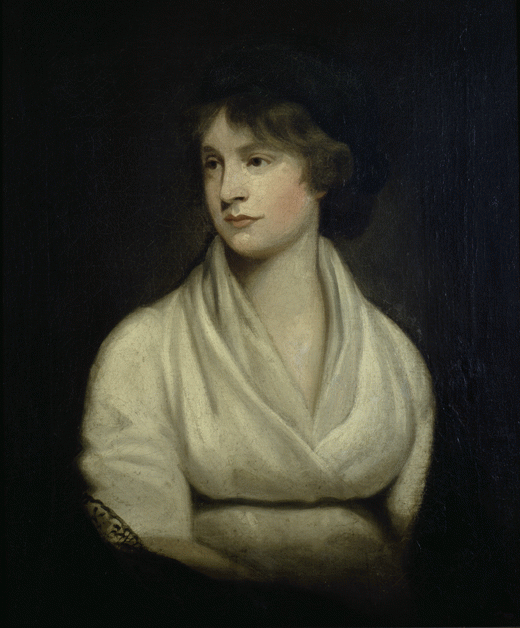
MARY WOLLSTONECRAFT
Mary Wollstonecraft (27 April 1759 – 10 September 1797) was a British writer. She was born in London, a daughter of a rich farmer who inherited his fortune. Her father was known because he was sometimes violent towards her, her four siblings, and their mother when his farms failed. Mary Wollstonecraft was the second oldest child in her family. She was the oldest female child. She left home at the age of nineteen to work and become independent.
Working in the English city of Bath, Somerset, she developed a disliking for the upper class and their social lives. In 1784 she experienced the near death of her sister Eliza who was also the victim of abuse at the hands of her husband. She escaped with her sister to London to preserve her life. Soon after, her good friend Fanny Blood, died of complications in childbirth. Wollstonecraft suffered depression following this and being in financial straights, she began to write her first book Thoughts on the Educators of Daughters then Mary: A Fiction.
Wollstonecraft was not only a writer, she was an early feminist and social campaigner. She wrote a children's book as well as her two most famous books A Vindication of the Rights of Man (1790), a response to the French Revolution, and A Vindication of the Rights of Woman (1792) which argued that women should have the same rights and education as men. She called for equal education for boys and girls, believing that education gives the tools necessary to compete with men in public and economic life.
She followed writers such as Catherine Macaulay who wrote Letters on Education in 1790, Thomas Paine, and John Locke. One of her most well-known books was "An Historical and Moral View of the Origin and Progress of the French Revolution (1794). She also wrote The Wrongs of Women, a novel telling of the confines and illusion of marriage and child rearing as the only happiness for women. She was revolutionary in arguing for education and the need for autonomy for women.
Wollstonecraft travelled to Paris in 1792 to take notes on the Revolution. While in Paris, she fell in love with Gilbert Imlay, an American who she later followed to London. She tried to commit suicide when their relationship ended but was rescued from the Thames. She wrote a book titled "Letter Written during a Short Residence in Sweden, Norway, and Denmark" (1796) from a series of letters written to Imlay, to support their daughter Fany Imlay, born in 1794. In the same year, Wollstonecraft met up with an old acquaintance and philosopher named William Godwin, whom she later married. They bore a daughter on 30 August 1797, whom they named Mary Wollstoncraft Godwin, who later became wife of Percy Shelley. Mary Wollstoncraft Godwin became Mary Shelley, the author of Frankenstein. Ironically, her mother Mary Wollstonecraft died of sepsis in London after her birth and suffered a similar fate as her best friend Fanny Blood whose death inspired her fight for women's rights and her first book. Wollstonecraft died of complications after labour due to a blood clot. Her husband William Godwin published Memoirs of the Author of "A vindication of the Rights of Women" in memory of her in 1798.

